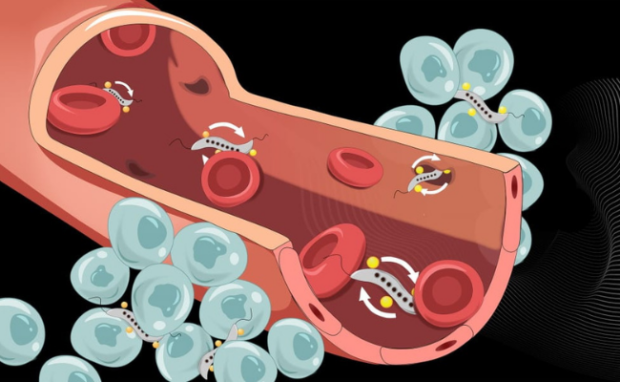Microrobots open new medical benefits
University of Waterloo researchers created new microrobots with unprecedented medical applications. These minuscule devices can move through tight, flooded environments like the human body to deliver cells or tissues. As a result, these tiny robots may facilitate medical procedures like biopsies and cell and tissue transport.
Technology gives rise to many amazing healthcare innovations, but they sometimes have unintended risks. That is why experts are more careful in developing such devices. The microrobots are one of those projects that could improve healthcare while minimizing risks. It’s also interesting to see how we can make tiny bots that facilitate medical procedures.
This article will discuss how the University of Waterloo’s experts created medical microrobots. Later, I will discuss other amazing healthcare innovations.
How do the microrobots work?

Hamed Shahsavan is the Department of Chemical Engineering professor who led this research. He said his microrobots consist of a hydrogel that changes shape when exposed to specific chemicals.
Shifting its cellulose nanoparticles enables researchers to program such form changes. The University of Waterloo says it is crucial for creating functional soft robots.
“In my research group, we are bridging the old and new,” stated Shahsavan. “We introduce emerging microrobots by leveraging traditional soft matter like hydrogels, liquid crystals, and colloids.”
Its advanced smart material is self-healing, which allows for more programming options. Experts can cut the material and put it back together without using glue or adhesives.
You may also like: AI stabilizes satellite internet connectivity
That makes the microrobots flexible enough to form numerous shapes. Also, the tiny soft robots respond to magnetism, letting researchers move them through the human body.
The research team shared a proof of concept by moving these bots through a maze using a magnetic field. “Chemical engineers play a critical role in pushing the frontiers of medical microrobotics research,” the professor said.
“Interestingly, tackling the many grand challenges in microrobotics requires the skillset and knowledge chemical engineers possess, including heat and mass transfer, fluid mechanics, reaction engineering, polymers, soft matter science, and biochemical systems. So, we are uniquely positioned to introduce innovative avenues in this emerging field.”
What are some other modern healthcare projects?
With more than 450 da Vinci systems installed at U.S. academic medical centers, Intuitive is helping to prepare the surgeons of tomorrow. https://t.co/YOsEmAM224 pic.twitter.com/qzB3doxRRx
— Intuitive (@IntuitiveSurg) April 27, 2022
You’d be surprised how far modern healthcare is progressing. For example, China recently grew the first-ever humanized kidneys in pigs. As a result, it could help more people who need transplants get help.
Guangzhou Institutes of Biomedicine and Health experts combined embryos with pig and human cells. Transferring them to surrogate pig mothers produces humanized kidneys.
These organs had a normal structure and tubule formation after 28 days. As a result, their research marks the first time people grew humanized body parts inside another species.
The news outlet said integrating stem cells into pig embryos was difficult because pig cells “outcompete human cells and pig and human cells have different physiological needs.” Yet, senior author Guangjin Pan found a solution. Here’s how it worked:
You may also like: Vietnam successfully clones pigs
- The scientists create a niche within a pig embryo so that human cells would not have to compete with pig cells. In other words, they used CRISPR so the pig embryo would lack two kidney development genes.
- Next, researchers engineered human pluripotent stem cells, which can develop into any cell type. Consequently, they are more likely to integrate with a pig and less likely to self-destruct.
- Then, the Guangzhou Institute researchers cultured these cells in a special medium. As a result, they turn them into “naive” cells resembling early human embryonic cells.
- The scientists grew these hybrids or chimeras in unique nutrients because human and pig cells have different needs.
- Afterward, they implanted the developing embryos in surrogate sows.
Medical education is also shifting due to the expanding use of surgery robots. The University of California added the control of the Da Vinci Surgical System and similar devices in its curriculum.
Conclusion
University of Waterloo experts created microrobots with promising medical applications. They could manipulate its shape to fit into the human body safely.
It also changes shape in response to magnetic fields, enabling researchers to move it through a patient remotely. Then, they could deliver specific cells and tissues to target parts.
Learn more about this medical microrobot project by reading its research paper on the Nature Communications website. Check more digital tips and trends at Inquirer Tech.